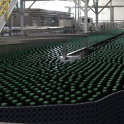|
Angry Grimace posted:I've never understood what's so beneficial about stainless steel valves on a mash tun vs. brass.
|
|
|
|

|
| # ? May 17, 2024 01:52 |
|
foodfight posted:Someone pulled a beer kit out of their basement tonight and gave it to me. I'm assuming it had been down there for 6 months at least. Is it still good? I gotta imagine the hops/yeast are suspect. Everything in the box is sealed. I would get new yeast but everything else will be fine. If it's liquid extract it won't taste the best but it'll be fine.
|
|
|
|
So uh. I'm gonna connect my PID to a PT100 and SSR soon. I've done alot of connecting low power electronics, but this is my first try at something which goes into the mains. Does this make sense?  Thing next to PT100 is heater/vessel. The PID is a Sestos.  Edit: No it doesn't. Like this then?  I'm confused. BlueGrot fucked around with this message at 14:09 on Aug 11, 2012 |
|
|
|
foodfight posted:Someone pulled a beer kit out of their basement tonight and gave it to me. I'm assuming it had been down there for 6 months at least. Is it still good? I gotta imagine the hops/yeast are suspect. Everything in the box is sealed. Is there a sell or use by date on the yeast? If it has dry yeast which was reasonably fresh when the kit was bought then you probably have another 6-12 months left on it. The malt is probably a bit iffy and the hops may have lost some potency but gently caress it brew it. You've got all the parts so if it doesn't come out you're only out a couple hours and some water. Angry Grimace posted:I've never understood what's so beneficial about stainless steel valves on a mash tun vs. brass. Brass contains a small amount of lead. I think taking any reasonable steps to limit exposure to lead is a good thing and spending a few extra dollars on stainless over brass is a reasonable step.
|
|
|
|
Galler posted:Brass contains a small amount of lead. I think taking any reasonable steps to limit exposure to lead is a good thing and spending a few extra dollars on stainless over brass is a reasonable step. If there is lead in your brass parts (not all brasses contain lead, but many do in order to make machining easier), it can only get into your beer if it is on the surface. Some people wash their brass parts before use with a mixture whose ingredients I forget (vinegar and peroxide?) to remove surface lead. Another very easy thing one could do would be to use a lead test kit like this one to see if there is actual lead on your brass parts. Or you could just buy lead-free brass parts - here in CA, I think there is a big push on to reduce lead use, as all the brass parts at my local Lowe's Depot are now labeled as lead-free. Myself, I have (nearly) all stainless in my kettles. It's pretty much indestructible under the kinds of abuse I am likely to subject it to, it looks good, and if needed I can use caustics to clean it (which is why it is used in commercial breweries). So I am an advocate of stainless parts, but I don't see anything wrong with using brass either, so long as you are cognizant of the (very small) risks and react in scale with those risks.
|
|
|
|
The small surface area of the inside of a brass fitting coming into contact with the equal small surface area within many, many gallons of liquid possibly dissolving the less than 2% of lead in brass is pretty much not something you should be worrying about. Especially when the difference is double the cost. I say this with almost entirely stainless fittings so take it with a grain of salt, but brass just isn't shiny enough for me. Hypnolobster fucked around with this message at 16:57 on Aug 11, 2012 |
|
|
|
I had hoped to get all SS parts but eventually had to compromise a brass fitting or two. Per a tutorial somebody linked in this thread I soaked the parts in some vinegar and haven't really worried about it too much. Just like I'm not worrying about chrome leaching off my brass taps.
|
|
|
|
BlueGrot posted:So uh. I'm gonna connect my PID to a PT100 and SSR soon. I've done alot of connecting low power electronics, but this is my first try at something which goes into the mains. Does this make sense?
|
|
|
|
It accepts 3-24DC and is a FOTEK SSR-25 DA. Missed that on the relay-sestos wiring.
|
|
|
|
Just drank the IPA I brewed 3 weeks ago! Despite the 75º+ temperatures during the entire time, there are no fusels. I think I burned the malt extract a little bit, which might explain the darkness. Overall I'm pleased with it, though I'll probably stick to things I can use Saison yeast in until it gets cooler outside. Here are my basic notes Goods: -Appropriate hop bitterness -Appropriate FG (1.014) and ABV at about 6% -Mild/moderate malt sweetness -Excellent lacing Bads: -Darker, heavier body than appropriate for IPA -Subdued hop aromatics -Mild astringency Flaws avoided: -No cardboard flavors -No fusels -No diacetyl -Very little haze
|
|
|
|
So I'm torn. I've picked up a 10gallon pot and Mash-tun conversion parts, but am now second guessing if I should just convert my current 5gallon to an mash-tun and use the 10gal for full boils. Originally, I was thinking of using the 10gallon as a stepping stone to picking up more pots "soon"(TM) - like christmas - and using the 5 gal as a hlt or something then and stay boiling in that one till then. What say you goons? Jacobey000 fucked around with this message at 12:42 on Aug 12, 2012 |
|
|
|
You'll find out pretty quickly that a 5 gallon mash tun is undersized, but if you aren't yet doing full boils I think that is more important right now.
|
|
|
|
BlueGrot posted:It accepts 3-24DC and is a FOTEK SSR-25 DA. Missed that on the relay-sestos wiring.
|
|
|
|
Any britgoons in this thread that can recommend a good place to get equipment/ingredients? I've got a buddy in the USAF that is stationed over in your neck of the woods and is wanting to get into the hobby, but I have no clue where to tell him to look for stuff. If there's a decent sized place that does a lot of online business similar to Northern Brewer that'd be the best so I can go through their catalog and send him a shopping list. They live in Bury St. Edmonds I think? Any input would be appreciated.
|
|
|
|
So I took the dregs from a few bottles of Jolly Pumpkin and have been trying to grow up a starter from it. I've got a decent amount of yeast/trub in the bottom of my starter now and I'm ready to use it. I have to questions though: 1. Do I have to wash this somehow? I assume this is almost all yeast since there isn't really break material that would have precipitated out (I used Malta Goya for the starter). 2. All that junk in the bottom should have enough bacteria in it to get the sour character, right? I assume they precipitate out as well, but there is a lot of liquid volume above the precipitated yeast that I don't want to include in the beer.
|
|
|
|
Zakath posted:Did you make sure the + and - signs on the relay and your temp controller match? Is it working now? If not, what exactly is it doing? I havent plugged it up yet. Getting the cables this week.
|
|
|
|
Anyone have any experience growing harvesting, and roasting their own barley for homebrewing. I have a large backyard and am going to start a bigass garden, that seems like the logical step.
|
|
|
|
So I've got an IPA in the fermentation chamber that's about 8 days from pitching and seems "done." I don't really want to rack off of the yeast, but I want to do a dry hop AND have it ready to serve by Saturday...can I dry hop on top of the yeast that's (probably) still actively cleaning up? I was thinking I'd put the dry hops (about 1 oz. total) on top of the beer starting tomorrow and let it go for about 3 days before crash cooling Thursday and carbonating Friday through cranking it. The only real difference in this from what I'd normally do is dry hopping in the primary (I'd normally rack to secondary for clarity reasons since there's still a lot of break material in there.)
|
|
|
|
RodShaft posted:Anyone have any experience growing harvesting, and roasting their own barley for homebrewing. I have a large backyard and am going to start a bigass garden, that seems like the logical step. I've never done it but this book might help: http://www.amazon.com/gp/aw/cr/1580170102/ref=aw_d_cr_books
|
|
|
|
Angry Grimace posted:So I've got an IPA in the fermentation chamber that's about 8 days from pitching and seems "done." I don't really want to rack off of the yeast, but I want to do a dry hop AND have it ready to serve by Saturday...can I dry hop on top of the yeast that's (probably) still actively cleaning up? I was thinking I'd put the dry hops (about 1 oz. total) on top of the beer starting tomorrow and let it go for about 3 days before crash cooling Thursday and carbonating Friday through cranking it. A week for dry-hopping, clearing, and carbonating seems fairly aggressive to me. I think it could be done, but I would use a lot of hops in an attempt to get some character in a short time; and I would bag them to keep the particulates in the finished beer down to a minimum. RodShaft posted:Anyone have any experience growing harvesting, and roasting their own barley for homebrewing. I have a large backyard and am going to start a bigass garden, that seems like the logical step. The goon called Rocko Bonaparte has done some home malting. His web page about the process seems to be down, though. He would buy feed barley and corn cheap and had a process worked out to sprout and dry it. I don't know anyone who has grown their own, though. Jo3sh fucked around with this message at 22:24 on Aug 12, 2012 |
|
|
|
Jo3sh posted:A week for dry-hopping, clearing, and carbonating seems fairly aggressive to me. I think it could be done, but I would use a lot of hops in an attempt to get some character in a short time; and I would bag them to keep the particulates in the finished beer down to a minimum.
|
|
|
|
Docjowles posted:If you're at the desired final gravity and the sample tastes good, crash cool it if you have the capability. It'll drop in a day or two. It did drop, and it's now bottled. Tasted alot better than when I did FG reading.
|
|
|
|
Prefect Six posted:Any britgoons in this thread that can recommend a good place to get equipment/ingredients? I've got a buddy in the USAF that is stationed over in your neck of the woods and is wanting to get into the hobby, but I have no clue where to tell him to look for stuff.
|
|
|
|
Kaiho posted:I buy from Brewuk.co.uk. Not the level of selection of northern brewer but pretty much anything I've needed. Thanks! It looks like morebeer ships to APO addresses but not sure how well that would for ingredients.
|
|
|
|
The weather took a dive to acceptable ferment temps so I did up a batch of ESB with US Goldings for the hops. My efficiency came out to 64% (OG 1.045, expected 1.050), which is about 10% lower than what I get when I use grain crushed at the local Northern Brewer. Has anyone else had issues with Midwestern Supply's crush? I really need to get my own mill.
|
|
|
|
Getting your own mill is really the only solution to that so that you can dial it in exactly where you want it and get the same results every time.
|
|
|
|
I've got a beer that has been in the bottle for about 7 weeks now and it is not carbonating at all. It has been sitting in my basement which is in the upper 70s. Is it time to open them up and add more sugar? Or should I just forget about it and move on to my next batch? Its just half of a 10 gallon batch that seems to be having issues, so it isn't a total loss.
|
|
|
|
Adding sugar is a pain and its weird half of it isn't working. If you really want to try, Cooper Carb tabs are at least easy to add. Otherwise, ever consider making malt vinegar?
|
|
|
|
Intended on making an oktoberfest, but they were out of munich DME :/ ended up going with light and making a blonde ale, instead. Racked it to secondary and it seems like it's going to be a good one. Tonight will be my first attempt at a proper yeast reclaim. Fortunately I have a few vials still labeled for the strain I used lying around, so those should come in handy.
|
|
|
|
I'm using some grain today for the first time - a 1/2 lb of roasted barley which will be going into what will hopefully end up being a chocolate cayenne pale ale; I've got a few questions though: 1) I'm planning on steeping the roasted barley and then adding the wort produced to my extract wort; according to this document on steeping grains, I should be cold-steeping the roasted barley for about 6 hours or so - however several of the recipes I've looked at online utilize a hot-steep at 150*F or so for roasted barley, which steep should I do here? 2) When should I add this to my extract wort? Before I add the extract itself? Before the water has boiled? Or after both of those? 3) I'm planning on adding about 12oz of bakers chocolate to this beer, according to one recipe a good time to do this is with 15 minutes left in the boil; is this a good idea? This is going to be a 5 gallon batch, with fresh cayenne peppers added after fermentation is done; I'm using Wyeast 1335 for this batch, and I'm going to shoot for an ABV of 5-6%, though I'm really not too concerned about that aspect of the brew.
|
|
|
|
I've always added the specialty grains when I first start heating the water and pull when it hits ~170*F which on the stove takes ~20-30 minute which works just fine. If I was going to do an extract batch on my propane burner I would probably hold the specialty grains at 140-170*F for ~20 minutes.
|
|
|
|
BlueGrot posted:So uh. I'm gonna connect my PID to a PT100 and SSR soon. I've done alot of connecting low power electronics, but this is my first try at something which goes into the mains. Does this make sense? EDIT: Here is a good wiring diagram showing a complete electric brewery using a BCS-460 instead of separate PID units. You can see the elements, contactors, and SSRs in the diagram. http://i.imgur.com/7aXTM.jpg digitalhifi fucked around with this message at 21:57 on Aug 13, 2012 |
|
|
|
I'm in Norway. We have 220. I just used 240 as it was an example from a guide I read online. According to your diagram, my thinking is correct. The only thing I'm really puzzled about is having the PID directly connected to 220v, and then chaining the power from there to the heating vessel, with one of the leads stopping by the SSR. Is that correct?
BlueGrot fucked around with this message at 23:24 on Aug 13, 2012 |
|
|
|
JawKnee posted:I'm using some grain today for the first time - a 1/2 lb of roasted barley which will be going into what will hopefully end up being a chocolate cayenne pale ale; I've got a few questions though: With 1/2 pound of roast barley in 5 gallons, that beer is not going to be pale - it will be dark brown. That's not a bad thing, I'm just saying the color may not be what you expect. It's possible I am not thinking of the same thing you are - the roast barley I have used is 500 Lovibond or more. 8 ounces of 550L roast barley (which is on the light end, in my experience) in five gallons gives 23 SRM and a description of "brown to dark brown." For a medium brown ale, I have been using 4 ounces of roast barley or black patent malt in ten gallons. That said, I have always done as Galler describes - put the specialty grain in a grain bag and add it to the water as I am heating it. I poke it a bit with a spoon or maybe dunk it in and out like a teabag to help extract some of the color and flavor from the grain, then pull it out when the temp hits 165 F or so, then stir in the malt extract.
|
|
|
|
BlueGrot posted:I'm in Norway. We have 220. I just used 240 as it was an example from a guide I read online. According to your diagram, my thinking is correct. The only thing I'm really puzzled about is having the PID directly connected to 220v, and then chaining the power from there to the heating vessel, with one of the leads stopping by the SSR. Is that correct? Of course, you want to be safe about how you wire the thing up, making sure there aren't exposed 220V wires or anything thing else you could accidentally zap yourself with. Also try to use decent gauge wire for anything connected directly to the 220. Hopefully you have an ohmeter or a multimeter so that you can double check your wiring after you get everything hooked up but before you plug it in.
|
|
|
|
Jo3sh posted:With 1/2 pound of roast barley in 5 gallons, that beer is not going to be pale - it will be dark brown. That's not a bad thing, I'm just saying the color may not be what you expect. It's possible I am not thinking of the same thing you are - the roast barley I have used is 500 Lovibond or more. 8 ounces of 550L roast barley (which is on the light end, in my experience) in five gallons gives 23 SRM and a description of "brown to dark brown." For a medium brown ale, I have been using 4 ounces of roast barley or black patent malt in ten gallons. Good - dropping the color way down as dark as possible is exactly what I want here. I ended up going with a cold-steep as it seems that it supposed to reduce bitter or tannin flavors while still keeping a nice smokey flavor - although I'm only steeping for 6 hours which is apparently the minumum for that kind of thing.
|
|
|
|
Can anyone explain a simple way to me to convert AAU to grams? Every website is the craziest pile of mathematics. I want to re-make the recipe I used several pages back. The guys at the brewing store converted it for me, but I should learn how to do it for my own sake. Lost the recipe page that had their calculations on it. Anyways the recipe calls for 5.25 AAU of Hallertau hops. How can I convert that into grams?
|
|
|
|
Goons, I request your advice. I've been an extract brewer for the past 1.5 years. I've recently gone all out (for me atleast) and brewed a 5 gallon batch each of the past 4 weeks. So this past week I craved more and I decided I'm going all-grain. Today I went to the local casino armed with $2,000 and an aim to go home with $2,000 more to spend on all-grain equipment. I only had to put down $500 of it, and 30 minutes later I left up $2,5000. So I ask, what do I aim for on the market? So far my research has lead me to desire the Blichmann Top Tier Modular Brew Stand and the Blichmann Tower of Power. However, the ultimate all-grain system looks to be the Sabco Brew Magic. But at a price tag of $6,995 my only hope to purchase that would be an incredible sale of used equipment. What other all-grain systems have goons found to work for their needs? I am specifically looking for something portable, on wheels, as I need to move it from indoors to outdoors when I want to brew. I am not necessarily looking to spend all of the money I've won, because I am also looking at a conical fermenter if I can find a good deal on all-grain equipment. However, I desire the ability of an automated mash temperature system. I've also been reading a book on building my own homebrew system, but much of it relies on welding, which I do not have the equipment for. I would prefer to build one myself and save the money for other uses if anyone has instructions for building a system that does not require welding equipment.
|
|
|
|
MoreBeer has a variety of brew sculptures as well. If I was in your position I would buy a welder and build one, but I like making poo poo and could find a bunch of uses for a mig welder.
|
|
|
|

|
| # ? May 17, 2024 01:52 |
|
Les Oeufs posted:Can anyone explain a simple way to me to convert AAU to grams? Every website is the craziest pile of mathematics. AAUs imply ounces, as they are simply the alpha acid content of the hops you are using, times the weight in ounces. So if your recipe called for 36AAU, and you could choose between Willamette at 4.8% and Simcoe at 12.2% alpha acid, you could use 7.5 ounces of Willamette or 2.95 ounces of Simcoe. Multiply those by (about) 28 to convert to grams. So: Target AAU / AA% * 28 = grams of hops to use.
|
|
|































